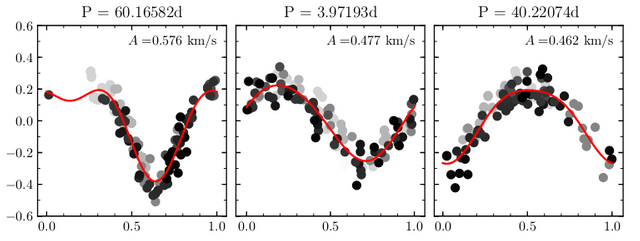The Puzzle of Polaris
As our compass to the north, Polaris is one of the most famous stars in the night sky. However, in a recently accepted article to Astronomy and Astrophysics, astronomer Richard Anderson explains that Polaris still holds many mysteries. Polaris also happens to be a type one Cepheid variable star. Cepheids are also famous due to the established relationship between their period (i.e., the time from cycle to cycle) and their brightness. This relationships allows astronomers to calculate the approximate distance to the Cepheid variable. For this reason, Cepheids are known as "standard candles" and are an important part of the astronomy toolbox.
However, Polaris has notoriously defied astronomers' attempts to pin down its parameters. Observations imply that its period is unstable and perhaps changing over time. Some astronomers have hypothesized that this may due to Polaris's current evolutionary state in that it is about to exit the instability strip. Complicating the situation is the fact that Polaris is a triple star system. In multiple star systems, the objects in the system orbit each other around a common center of mass. This orbital motion can be detected by observing at spectral lines of the system that shift over time. This shift can be used to determine the radial velocity, the movement of the object toward or away from Earth. Such radial velocity calculations led astronomers to believe Polaris was a triple star system with variability on at least two time scales.
Furthermore, it appears that the radial velocity measurements of Polaris are also changing over time. The potential relationship between changing period and changing radial velocity is poorly understood, and that's where the current research comes into play. This study made use of observations taken with the HERMES spectrograph at the Australian Astronomical Observatory from 2011 through 2018. This yielded 162 high-resolution radial velocity observations (see Figure 1 below).

With this updated radial velocity information from HERMES, the data was searched for periodicty using Lomb-Scargle periodiagrams. The results are shown below in Figure 2.

This study sought to clarify the ambiguous and conflicting data of Polaris and offer a more elegant solution to its properties. The author suggests that many of the previous studies' historical spectrographic data may have been inconsistent with each other due to the differences in quality between the instruments. This may have led to inconsistent data for which astronomers proposed unnecessarily complicated solutions. More research is definitely needed to unravel the mystery of this astronomical engima.
References
Anderson, R. I. 2019, https://arxiv.org/pdf/1902.08031.pdf
This post has been voted on by the SteemSTEM curation team and voting trail in collaboration with @utopian-io and @curie.
If you appreciate the work we are doing then consider voting all three projects for witness by selecting stem.witness, utopian-io and curie!
For additional information please join us on the SteemSTEM discord and to get to know the rest of the community!
Congratulations @ptsouth97! You have completed the following achievement on the Steem blockchain and have been rewarded with new badge(s) :
Click here to view your Board
If you no longer want to receive notifications, reply to this comment with the word
STOPHi @ptsouth97!
Your post was upvoted by Utopian.io in cooperation with @steemstem - supporting knowledge, innovation and technological advancement on the Steem Blockchain.
Contribute to Open Source with utopian.io
Learn how to contribute on our website and join the new open source economy.
Want to chat? Join the Utopian Community on Discord https://discord.gg/h52nFrV